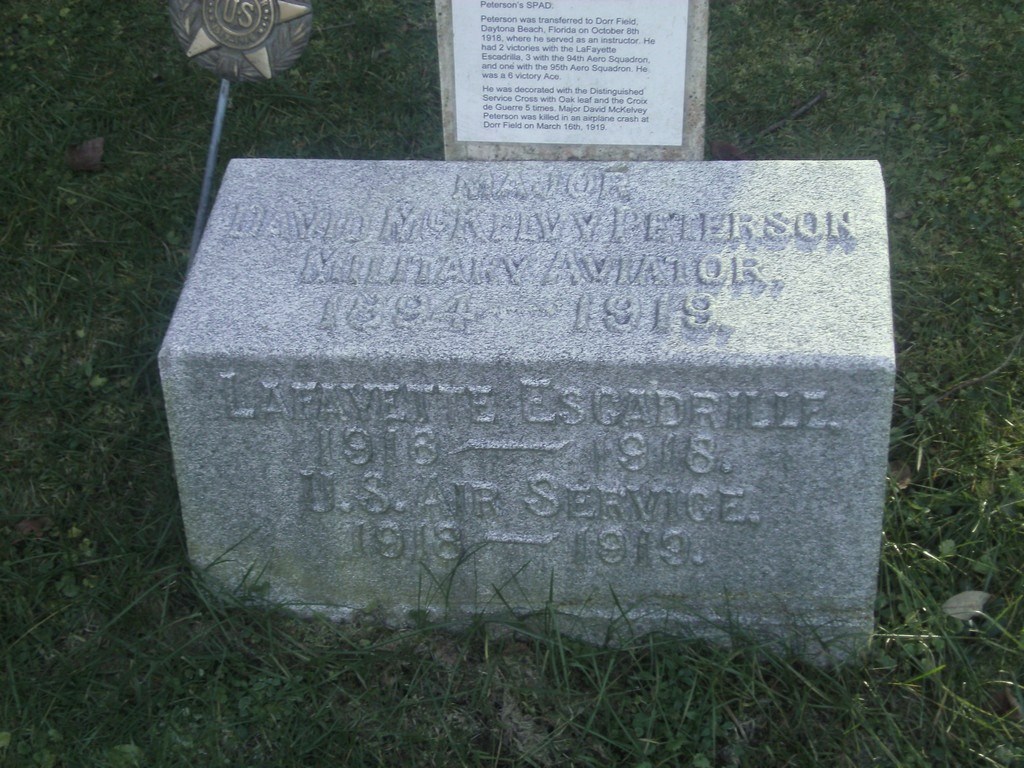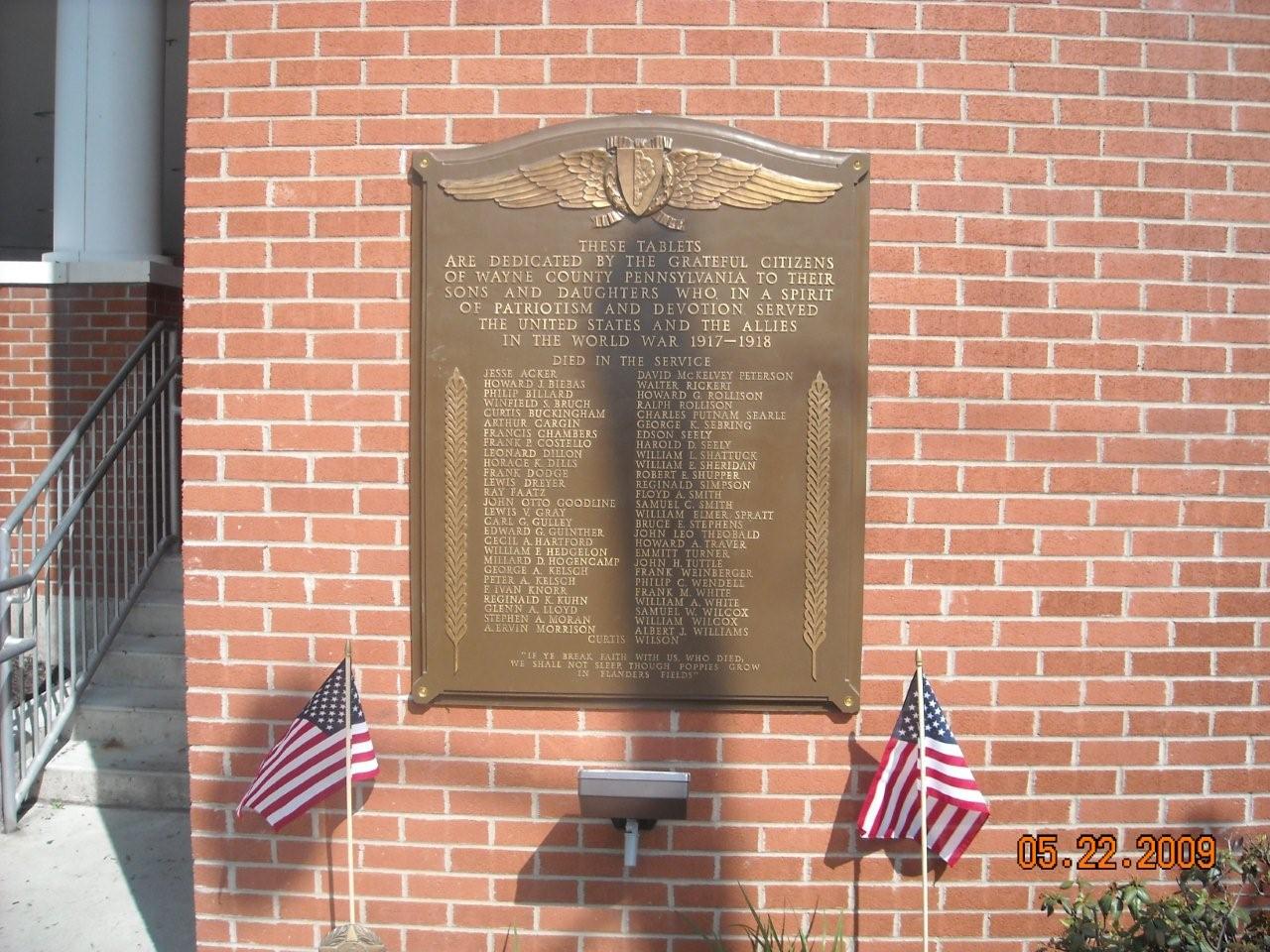Citatation for the Distinguished Service Cross
The President of the United States of America, authorized by Act of Congress, July 9, 1918, takes pleasure in presenting the Distinguished Service Cross to Captain (Air Service) David McKelvey Peterson, United States Army Air Service, for extraordinary heroism in action while serving with 94th Aero Squadron, 1st Pursuit Group, U.S. Army Air Service, A.E.F., near Luneville, France, on 3 May 1918. Leading a patrol of three, Captain Peterson encountered five enemy planes at an altitude of 3,500 meters and immediately gave battle. Notwithstanding the fact that he was attacked from all sides, this officer, by skillful maneuvering, succeeded in shooting down one of the enemy's planes and dispersing the remaining four.
Second Citation for the Distinguished Service Cross
The President of the United States of America, authorized by Act of Congress, July 9, 1918, takes pleasure in presenting a Bronze Oak Leaf Cluster in lieu of a Second Award of the Distinguished Service Cross to Captain (Air Service) David McKelvey Peterson, United States Army Air Service, for extraordinary heroism in action while serving with 94th Aero Squadron, 1st Pursuit Group, U.S. Army Air Service, A.E.F., near Thiaucourt, France, on 15 May 1918. While on a patrol alone Captain Peterson encountered two enemy planes at an altitude of 52 meters. He promptly attacked, despite the odds, and shot down one of the enemy planes in flames. While thus engaged he was attacked from above by the second enemy plane, but by skillful maneuvering he succeeded in shooting it down also.
The French have immortalized his name on the Lafayette Escadrille Memorial.
The Major David McKelvey Peterson American Legion Post No. 254 in Honesdale, Pennsylvania is named in his honor.
Wayne Memorial Hospital World War I Memorial Plaque
Citatation for the Distinguished Service Cross
The President of the United States of America, authorized by Act of Congress, July 9, 1918, takes pleasure in presenting the Distinguished Service Cross to Captain (Air Service) David McKelvey Peterson, United States Army Air Service, for extraordinary heroism in action while serving with 94th Aero Squadron, 1st Pursuit Group, U.S. Army Air Service, A.E.F., near Luneville, France, on 3 May 1918. Leading a patrol of three, Captain Peterson encountered five enemy planes at an altitude of 3,500 meters and immediately gave battle. Notwithstanding the fact that he was attacked from all sides, this officer, by skillful maneuvering, succeeded in shooting down one of the enemy's planes and dispersing the remaining four.
Second Citation for the Distinguished Service Cross
The President of the United States of America, authorized by Act of Congress, July 9, 1918, takes pleasure in presenting a Bronze Oak Leaf Cluster in lieu of a Second Award of the Distinguished Service Cross to Captain (Air Service) David McKelvey Peterson, United States Army Air Service, for extraordinary heroism in action while serving with 94th Aero Squadron, 1st Pursuit Group, U.S. Army Air Service, A.E.F., near Thiaucourt, France, on 15 May 1918. While on a patrol alone Captain Peterson encountered two enemy planes at an altitude of 52 meters. He promptly attacked, despite the odds, and shot down one of the enemy planes in flames. While thus engaged he was attacked from above by the second enemy plane, but by skillful maneuvering he succeeded in shooting it down also.
The French have immortalized his name on the Lafayette Escadrille Memorial.
The Major David McKelvey Peterson American Legion Post No. 254 in Honesdale, Pennsylvania is named in his honor.
Wayne Memorial Hospital World War I Memorial Plaque
Family Members
Sponsored by Ancestry
Advertisement
Records on Ancestry
Advertisement













